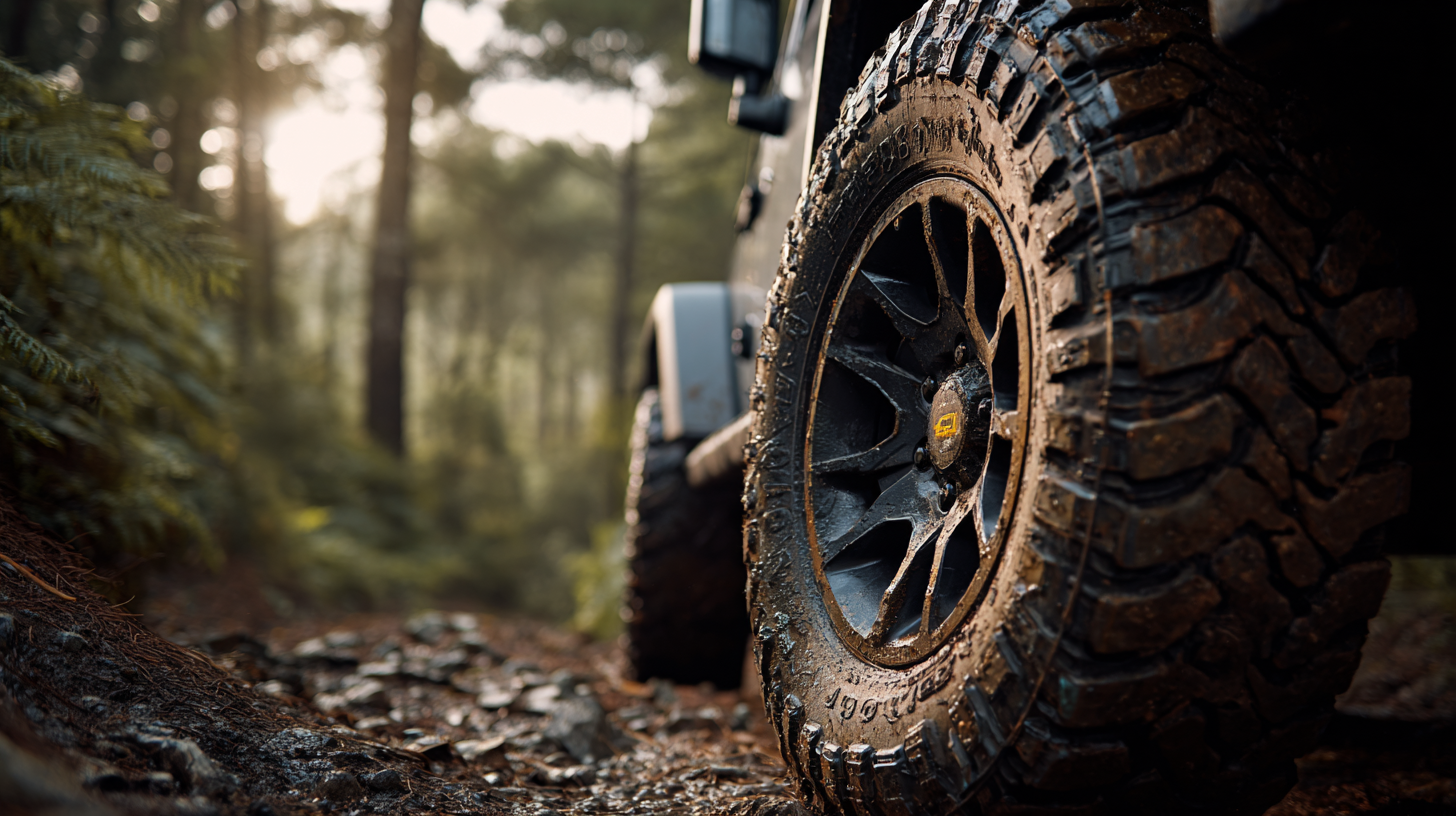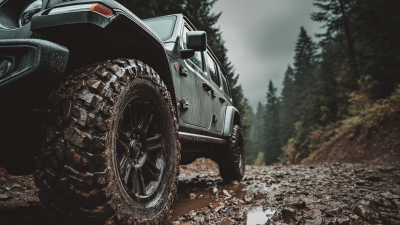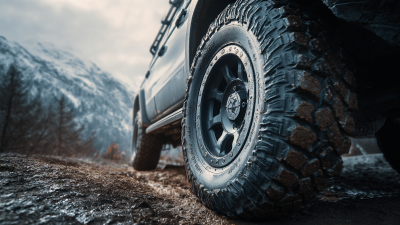14 Toro Road Toronto, Ontario
Unlocking Adventure: The Ultimate Guide to Choosing Off Road Tires for Any Terrain
In the thrilling world of off-roading, the right set of off road tires can be the key to unlocking unforgettable adventures across diverse terrains. Whether you’re navigating treacherous rocky trails, slippery muddy paths, or challenging sandy dunes, choosing the appropriate tires is essential for both safety and performance. This ultimate guide will equip you with the knowledge needed to select off road tires tailored to your specific vehicle and the environments you plan to conquer. We will explore the various types of off road tires available, their unique features, and how to evaluate which ones best suit your off-roading style. With the right information at your fingertips, you can confidently embark on your next adventure, knowing that your choice of off road tires will enhance your experience and keep you in control through every twist and turn of the wild outdoors.

Understanding the Different Types of Off-Road Tires and Their Applications
When selecting off-road tires, understanding the various types available and their applications is crucial for maximizing performance on different terrains. There are primarily three categories of off-road tires: mud terrain, all-terrain, and rock crawling tires.
Mud terrain tires feature aggressive tread patterns designed to provide exceptional grip in soft, muddy conditions, making them ideal for off-road enthusiasts who frequently traverse swampy areas. All-terrain tires, on the other hand, blend on-road comfort with off-road capability, allowing for versatility across mixed surfaces, which is perfect for drivers who enjoy both daily commutes and weekend trail exploration.
Rock crawling tires are built specifically for traversing rocky and rugged landscapes. They typically include large sidewalls for improved traction and puncture resistance, enabling drivers to tackle challenging boulders without damaging their vehicles. Each tire type serves distinct purposes, so it’s essential to evaluate the primary terrain that will be encountered to choose the right tires for optimal handling, safety, and performance.
By understanding the characteristics of these tires, off-road adventurers can unlock a whole new level of adventure while ensuring their vehicles are equipped to handle any challenge thrown their way.
Key Factors to Consider When Choosing Off-Road Tires for Varying Terrains
When choosing off-road tires, several key factors come into play to ensure optimal performance on varying terrains. First and foremost, the tread design is crucial. Aggressive, deep treads are ideal for loose surfaces like mud and sand, as they provide better traction and help prevent the vehicle from getting stuck. Conversely, a more subtle tread pattern works well for rocky terrains, where sharp edges can grip the surface without creating excessive resistance.
Another important element to consider is the tire's construction. Tires designed for off-road use should have reinforced sidewalls to withstand the impacts and abrasions commonly encountered on rugged paths. Additionally, the size of the tires can significantly affect your vehicle’s handling and comfort level. Larger tires offer enhanced ground clearance and can roll over obstacles more easily, but it's essential to ensure that they are compatible with your vehicle’s specifications. By balancing these factors—tread design, tire construction, and size—you can effectively select off-road tires that deliver both safety and performance across various terrains.
Comparative Analysis of Off-Road Tire Features for Different Terrains
Comparing All-Terrain vs. Mud-Terrain Tires: Which is Right for You?
When choosing between all-terrain and mud-terrain tires, it's essential to consider your specific off-road needs and driving conditions. All-terrain tires are designed for versatility, offering a balanced performance on both paved roads and off-the-beaten-path adventures. They feature a tread pattern that provides good traction on various surfaces while ensuring a smooth ride on highways, making them an ideal choice for drivers who frequently switch between road and dirt. If you're looking for a tire that enhances fuel efficiency and continues to perform well in everyday driving situations, all-terrain might be your best bet.
 On the other hand, mud-terrain tires excel in specialized off-road environments, particularly in muddy or loose terrains. These tires come with aggressive tread designs that dig deep into soft surfaces for maximum traction but can sacrifice road performance and noise comfort. If off-roading is your passion and you often find yourself navigating through challenging conditions, mud-terrain tires will give you the grip required to tackle even the toughest trails. Ultimately, your decision should align with your driving style and the types of terrains you plan to encounter.
On the other hand, mud-terrain tires excel in specialized off-road environments, particularly in muddy or loose terrains. These tires come with aggressive tread designs that dig deep into soft surfaces for maximum traction but can sacrifice road performance and noise comfort. If off-roading is your passion and you often find yourself navigating through challenging conditions, mud-terrain tires will give you the grip required to tackle even the toughest trails. Ultimately, your decision should align with your driving style and the types of terrains you plan to encounter.
Essential Features to Look for in Quality Off-Road Tires
When choosing off-road tires, several essential features should be at the forefront of your considerations. First and foremost, tread design plays a critical role in how well a tire performs on various terrains. Deep, aggressive treads with a wider spacing are ideal for loose surfaces like mud or sand, while a more symmetrical tread pattern is suitable for rocky or hard-packed trails. Additionally, look for tires with larger side lugs that provide increased traction and protection against sharp objects.
Durability is another key feature to consider. Off-road tires must withstand the rigors of harsh environments, so prioritize those made from robust materials resistant to punctures and abrasions. The rubber compound should offer a balance between flexibility and toughness, ensuring that the tires can navigate over obstacles while still providing a comfortable ride. Furthermore, tread life is important; tires with a specialized compound designed for off-road conditions tend to have longer-lasting performance, saving you money in the long run while enhancing your off-road adventures.
Maintenance Tips for Off-Road Tires to Maximize Performance and Longevity
When venturing off the beaten path, maintaining your off-road tires is essential for maximizing performance and ensuring longevity. Proper care can enhance traction, improve fuel efficiency, and prolong the life of your tires. To get started, regularly inspect your tires for any signs of wear, such as cracks, bulges, or uneven tread wear. Keep an eye on your tire pressure as well; both under-inflation and over-inflation can compromise performance on rough terrain.

Another vital tip is rotating your tires frequently. Rotating helps distribute wear evenly across all tires, minimizing the chances of premature wear and tear. It’s typically recommended to rotate tires every 5,000 to 7,500 miles, but always refer to your vehicle's manual for specific guidelines. Furthermore, consider using a tire dressing that protects against UV rays and outside elements, helping maintain the rubber's flexibility and reducing the risk of dry rot.
Lastly, make sure to clean your tires after off-road excursions. Removing dirt, mud, and debris prevents abrasive materials from damaging the tires and helps identify any potential issues like punctures or tears. A simple wash can go a long way in keeping your tires in peak condition for your next adventure.
Related Posts
-

Maximize Your Adventure: The Ultimate Guide to Choosing Off Road Tires for Every Terrain
-

Exploring Tire Places: Key Industry Trends from the 138th China Import and Export Fair 2025
-

Experience Unmatched Performance with Our Premium Sport Tires for Every Driving Enthusiast
-

The Ultimate Guide to Choosing the Best All Terrain Tires for Every Adventure
-

Exploring the Impact of Van Tyres on Trade Dynamics at the 138th China Import and Export Fair 2025
-

5 Essential Benefits of All Terrain Tires: Elevate Your Vehicle's Off-Road Performance!

